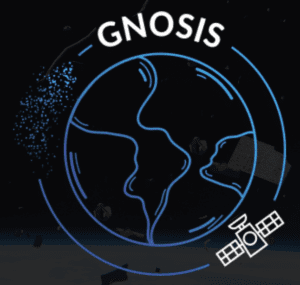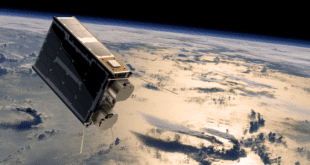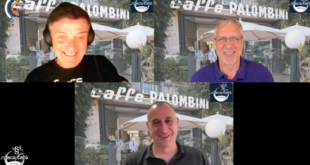by Stuart Eves
 Space is changing – the near-Earth environment that was once principally used for largely strategic purposes by national governments is now increasingly being used for “tactical” applications by commercial companies.
Space is changing – the near-Earth environment that was once principally used for largely strategic purposes by national governments is now increasingly being used for “tactical” applications by commercial companies.
This creates a number of areas of potential contention – between different satellite operators competing for access to preferred orbital slots, and between space commerce and the astronomical community.
In order to manage the increasing complexity of the space environment, and to ensure a sustainable future for Earth orbit, GNOSIS (Global Network On Sustainability In Space) is convening a conference on 8 and 9 September to facilitate interactions between government and industry.
Sponsored by STFC, the GNOSIS network provides a conduit for UK core science to be brought to bear on an issue which has implications for people worldwide. If we lose access to Earth orbit as a result of debris proliferation, then we also lose access to all the benefits that satellites offer, including much of the data that allows us to monitor climate change.
The GNOSIS network has, since its inception, attempted to highlight the principal issues associated with exploiting space sustainably. Inevitably this has led to a focus on space debris and surveillance of the space environment, but there has also been an attempt to show how many of the topics in this domain are intimately connected.
As an example, activity on the Sun is variable, and this leads to changing conditions in the near-Earth environment which affect both active satellites and debris. The former are subject to a range of “ageing” mechanisms as a result of the solar wind particles and the electromagnetic radiation which the Sun emits. Moreover, when the Sun is less active, a greater number of very high energy cosmic rays can reach the inner solar system. These particles can generate “single event upsets” in satellite electronics, leading to the need for appropriately robust hardware and software designs.
The energy from the Sun, (often referred to as space weather), also directly affects the density of the Earth’s upper atmosphere. When our local star is most active, an increased proportion of its energy is in the X-ray and UV parts of the electromagnetic spectrum, which are absorbed by the atmosphere, causing it to expand. This process creates increased drag on both satellites and debris, making forward prediction of their orbits more inaccurate. Only when we have the ability to “forecast” space weather and feed the results of those predictions into our orbit models, will we be able to extend conjunction warning times and enable satellite operators to take informed decisions about whether to manoeuvre their satellites out of harm’s way.
This activity is known generically as “Space Traffic Management”, (and will likely be called “Space Traffic Control” in the future, when the lawyers become involved in the regulation of the space domain). Space Law is just one of the non-technical areas which could also have a major impact on the sustainability of space. Much of our existing space legislation is derived from international treaties signed half a century ago, when, as noted earlier, space was largely an activity conducted by national governments.
Now, with the vast majority of the hardware being launched into space for commercial purposes, we are already seeing contention between competing mega-constellation operators for both frequency filings and orbital altitudes. Use of the electromagnetic spectrum is coordinated on an international basis by the ITU, but no equivalent process exists for managing physical space. The G (for “Global”) at the start of the GNOSIS acronym highlights the need for a multilateral solution to what is clearly a multinational problem.
In order to solve some of the problems associated with space sustainability, it is clear that we need to improve our ability to measure objects in Earth orbit. For example, the network has helped to identify a range of gaps in our ability to detect and track small debris objects in the size range between 1 and 10 cm, and has then sponsored workshops aimed at developing novel techniques to extend the performance envelope of our existing sensors.
Some of these improvements will, inevitably, be based on ground-based telescopes and radars, utilising the research knowledge that has been accumulated in the STFC community via astronomical research programmes. In addition, it is becoming apparent that some of our sustainability goals will only be achieved if we can enhance our “in-situ” measurements of the near Earth environment by placing space surveillance sensors on satellites in orbit, since they will be significantly closer to the targets they are trying to observe. The development of these “space-based” sensors will be the specific focus of some of the “challenges” which the GNOSIS network will be launching over the next few months – funded studies which will establish the potential viability and utility of sensors which could exploit target signatures, (in the UV and IR parts of the spectrum), which are hard to access from the ground.
Increasing the range of sensors used for space domain awareness will, inevitably create new types of data products. An early focus for the GNOSIS workshop and sandpit meetings was the need to improve our existing catalogues of space objects. Currently these consist mostly of tracking data, which allows the orbital position of objects to be maintained and predicted, but which provide almost no other information on the nature, ownership, and life-history of the objects concerned. Only when we are able to evolve these catalogues into a comprehensive database will it be possible to manage the space environment properly.
Sustainability in space is also very dependent on the integrity of the hardware that we launch into space. As a result, the GNOSIS blog also contains articles relating to satellite reliability, and the potential for satellite servicing, repair, and reuse. All of these applications require satellites to get “up close and personal”, which is a potentially risky business if the operations are planned on incomplete tracking data. Only when our “custody” of space objects can be extended from “occasional reconnaissance” to “routine surveillance” will it be possible to exploit these technologies safely.
If, as the saying goes, you have been affected by any of the issues raised in this article, please feel free to contact the GNOSIS network and attend the forthcoming conference. Amongst the items discussed will almost certainly be the current concern of the astronomical community about the impact that mega-constellations are having on their science. And when you recall that the only way we are likely to avoid the fate of the dinosaurs is to detect asteroids well before they slam into our planet, it can be seen that utilising space in a sustainable fashion is one of the most pressing existential issues of our times.






